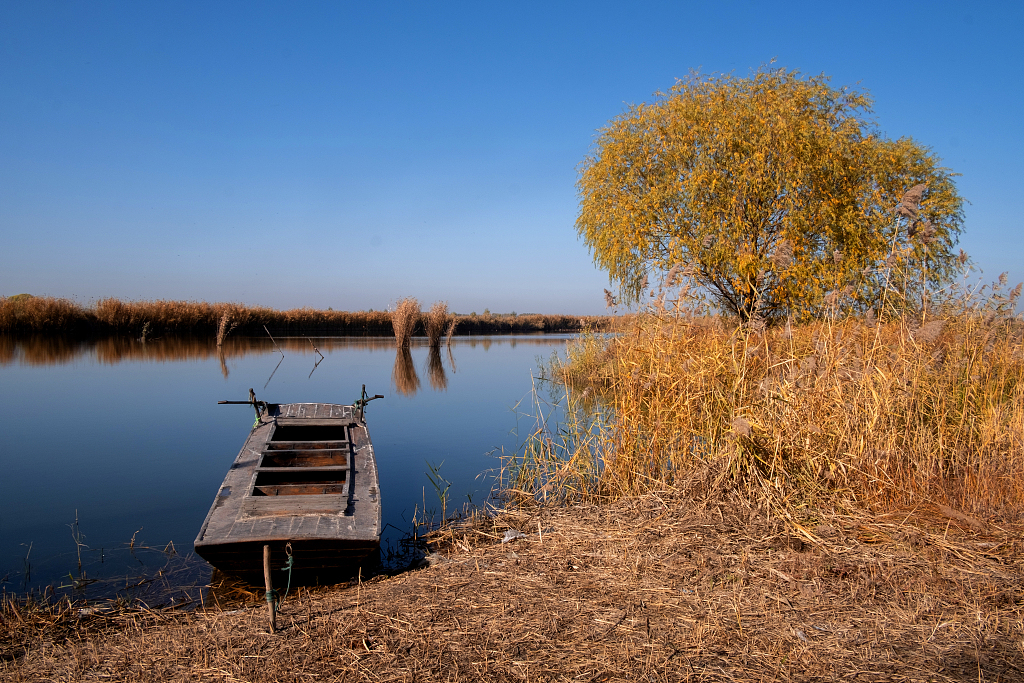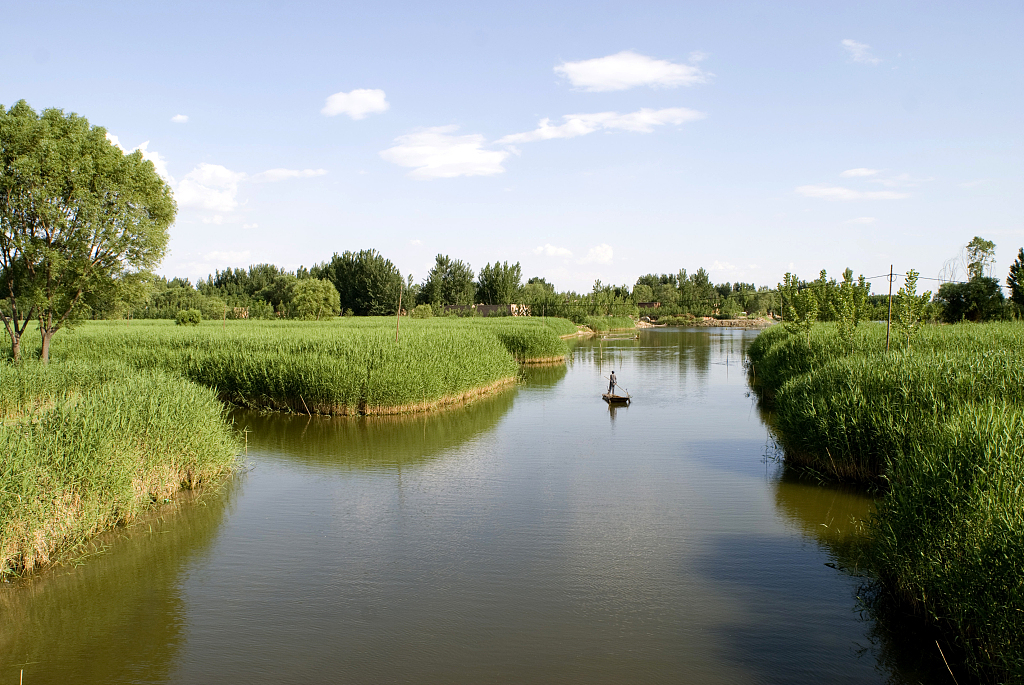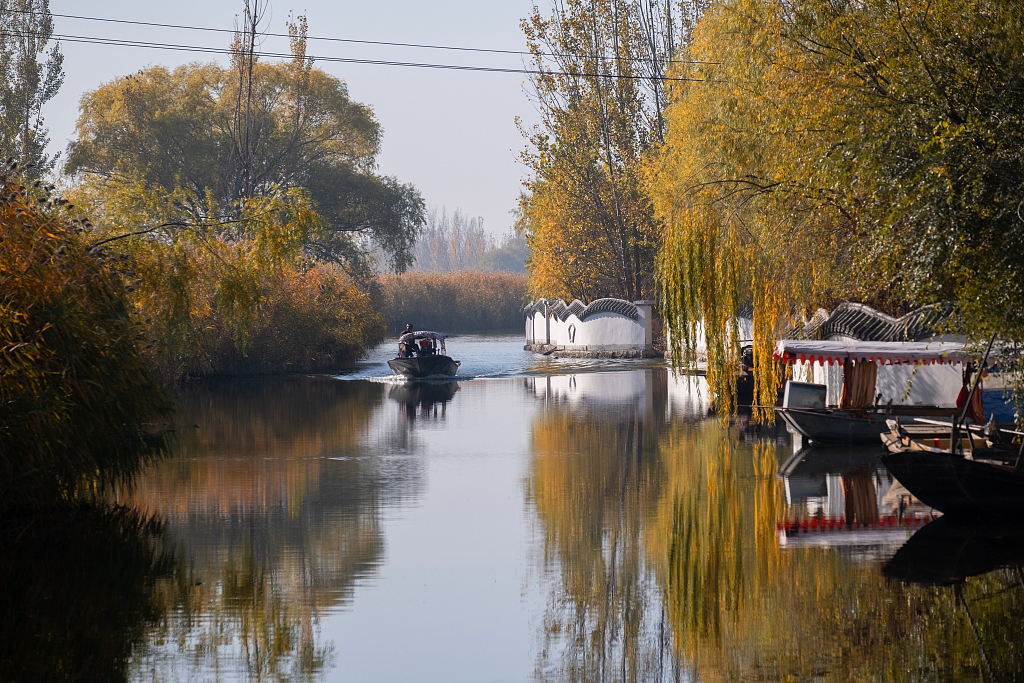The old Chinese movie "Zhang Ga, the Soldier Boy", is famous for the lake where Zhang Ga lived, for the beautiful lotus, flourishing reeds and plenty of fish it has. Lake Baiyangdian, a pearl that falls on the plain of northern China, is precisely like that lake.

Scenery of Lake Baiyangdian in the Xiong'an New Area of Baoding City in north China's Hebei Province. /VCG Photo
Scenery of Lake Baiyangdian in the Xiong'an New Area of Baoding City in north China's Hebei Province. /VCG Photo
Lake Baiyangdian locates in the Xiong'an New Area of Baoding City in north China's Hebei Province. It is the largest freshwater lake in north China, covering about 360 square kilometers area. It embraces the largest wetland on the North China Plain and is the home to abundant flora and fauna like lotus, reeds, fish and birds.
Baiyangdian lies at the heart of the Beijing-Tianjin-Hebei (Jing-Jin-Ji) region, and functions as a regulator of the region's ecology, hence it is also dubbed the "Kidney of north China" to show its importance.

Lake Baiyangdian's wetlands in north China's Hebei Province. /VCG Photo
Lake Baiyangdian's wetlands in north China's Hebei Province. /VCG Photo
Lake Baiyangdian was once facing the great threats of pollution and droughts. In the 1960s, Lake Baiyangdian was seriously affected by industrial pollution, as sewage containing phosphorus and permanganate polluted water and lake slit, causing a large number of aquatic species' death. The lake almost dried out because of climate change from 1983 to 1988, and drought happened again from 1997 to 2003.

Boating in reeds marshes of Lake Baiyangdian in north China's Hebei Province. /VCG Photo
Boating in reeds marshes of Lake Baiyangdian in north China's Hebei Province. /VCG Photo
In October 2005, local governments announced investing 8.05 million yuan (about 1.15 million U.S. dollars), launching 26 rehabilitation projects altogether to restore and improve Lake Baiyangdian's ecological environment in 10 years from 2005 to 2014. After that, a slew of plans and regulations were implemented and established gradually, aiming to combat pollution and the recurring droughts of the lake.

Autumn scenery at Lake Baiyangdian in north China's Hebei Province. /VCG Photo
Autumn scenery at Lake Baiyangdian in north China's Hebei Province. /VCG Photo
In 2017, when the Xiong'an New Area was established, which covered the area of Lake Baiyangdian and its surroundings, the restoration and protection process was reinforced. President Xi Jinping paid particular attention to the lake, emphasizing the importance of environmental protection of the Lake Baiyangdian basin. One year later, the water quality of Lake Baiyangdian has improved significantly, enough to reach Grade III.

Tourists to Lake Baiyangdian in north China's Hebei Province. /VCG Photo
Tourists to Lake Baiyangdian in north China's Hebei Province. /VCG Photo
Now, the beauty of Lake Baiyangdian resembles the one described in "Zhang Ga, the Soldier Boy", attracting visitors who hope to take a glance at the vivid lotus, flourishing reeds and the clear lake water. According to the newly published plan on environmental protection of the Xiong'an New Area, the next target of Baiyangdian's comprehensive environmental treatment and ecological restoration is going to bring the water level up to seven meters, and the water quality from Grade III to IV.
(Cover: Lotus flowers thriving in Lake Baiyangdian in north China's Hebei Province. /VCG Photo)
(If you want to contribute and have specific expertise, please contact us at nature@cgtn.com)